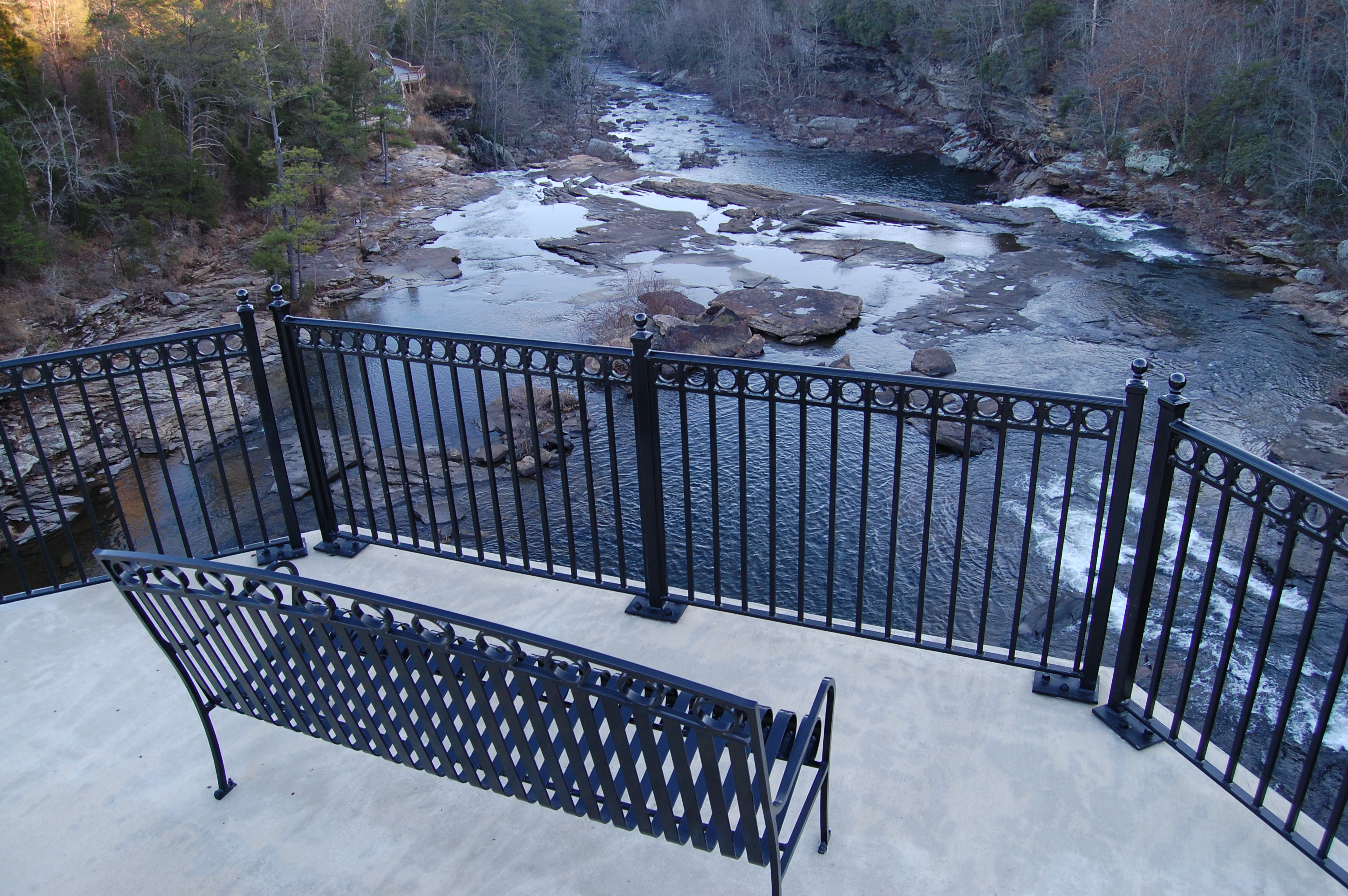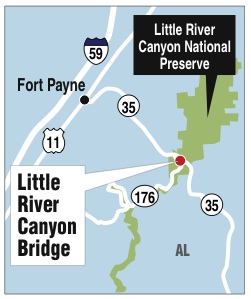FOR MORE INFORMATIONTo find out more about the Little River Canyon National Preserve, Jacksonville State University's Canyon Center and the new Little River Bridge, go to canyoncenter.org or call 256-845-3548. The Canyon Center is on Alabama Highway 35, about 1/8 mile from the Little River Bridge. Hours are 10 a.m.-4 p.m. CST Monday-Friday.BY THE NUMBERS$7.6 million: Total project cost53: Bridge height in feet above the Little River465: Bridge length in feet11,800: Square feet of simulated stone masonry100,000-200,000: Estimated annual visitors to the parkSource: Little River Canyon National Preserve and the National Park ServiceAREA WORSTSThe Sierra Club's 50 Best and Worst Projects report put a couple of area projects on the "worst" side of the list:• Corridor K proposed on U.S. Highway 64 at the Tennessee-North Carolina line: "Such an enormous construction project in such a pristine mountain range will have devastating environmental consequences ranging from air pollution to acidic runoff."• Interstate 3 proposed between Savannah, Ga., and Knoxville: "(W)ould threaten four National Forests and the Great Smoky Mountains National Park. The pristine Upper Chattahoochee River would be subjected to increased pollution from highway runoff as would the whole Chattahoochee National Park."Source: Sierra Club's report, "Smart Choices, Less Traffic: 50 Best and Worst Transportation Projects in the United States"
FORT PAYNE, Ala. - The striking $7.6 million span across Little River that connects DeKalb and Cherokee counties has been named to the Sierra Club's Best U.S. Transportation Projects for 2012.
Sierra's praises are the first from such a large group, but Little River Canyon Center director Pete Conroy isn't surprised.
"We worked really hard for the installation of a special bridge, not just because we wanted a special bridge but because we wanted it to serve as a model," Conroy said Friday.
The new Little River Canyon Bridge was completed two months ahead of schedule when it opened in September 2010.
The bridge made the Sierra Club list for its performance in a review on five criteria that includes its impact on oil use, environment, health, economy and land use, according to the September report, "Smart Choices, Less Traffic: 50 Best and Worst Transportation Projects in the United States."
"Due to its structural integrity and environmentally sensitive design, the bridge project serves as a role model for future bridges," the Sierra Club report states.
The 2012 report is based on one done in 2002 to review examples of the best and worst in transportation investment.
Gail Bishop, Little River Canyon National Preserve's superintendent, said the bridge offers "amazing views of the Little River and the falls" from a modern, safe, people-friendly pedestrian walkway and boardwalk.
Conroy said he "can't think of anything in the state of Alabama like it."
The old bridge, built in 1948, had structural and safety problems that called for a replacement, officials said.
In a news release, Alabama Department of Transportation Director John Cooper called the bridge "an example of ALDOT's commitment to work with local stockholders to design a project that matches the landscape."
The pedestrian walking lane across the bridge is separated from vehicle traffic by a concrete wall made to look like sandstone.
The bridge's piers match.
"Green" techniques were used in several areas. Recycled pavement was used for the driving surface, rebar was made from recycled steel, boardwalks reused plastic bottles, and waste cotton products were used to retain soil. The guardrails from the old bridge were reused as seating at the Canyon Center, and old concrete was used as fill on other state projects, officials said.
Conroy said hundreds of schoolchildren use the site as a classroom to learn about wildlife, environment, engineering, history and "green" practices such as those used in the project.

